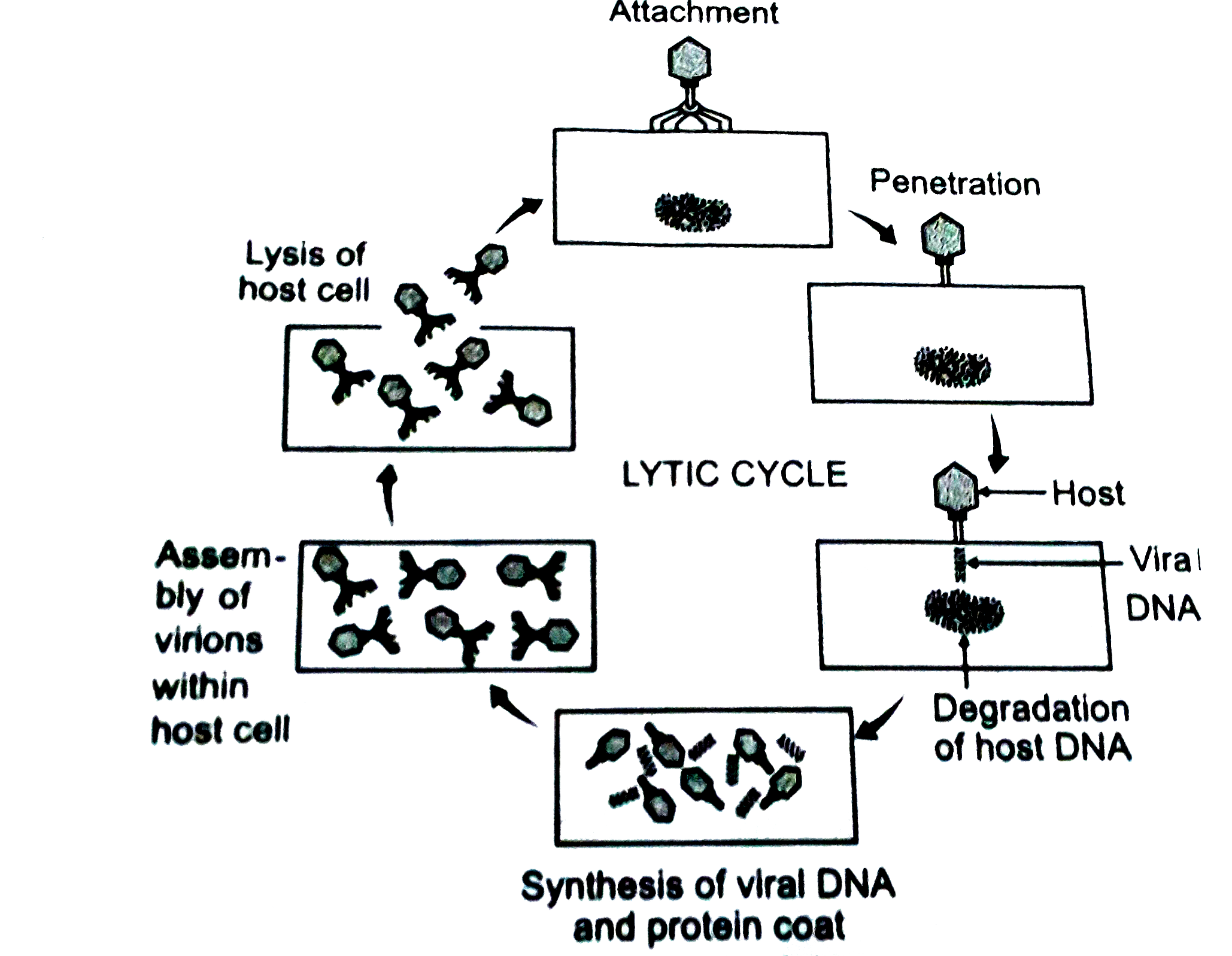Explain replication of bacteriophage with the help of a suitable diagram.
Replication of bacteriophages (Lytic cycle) inside the specific host/bacterial cell takes place in the following steps :
(a) Attachment : Bacteriophages attach to specific receptors on the surface of bacteria. As phage do not move independently, they rely on random encounters with the right receptors.
(b) Penetration : After the contact, the tail fibres bring the base plate closer to the surface of the cell. Once attached completely, the tail contracts, injecting genetic material (DNA) through the bacterial membrane.
( c ) Synthesis of proteins and nucleic acids : The host's normal synthesis of proteins and nucleic acids is disrupted, and it is forced to manufacture viral DNA and proteins instead. These products are the part of new virions within the cell or proteins involved in cell lysis.
(d) Virion assembly : The base plates are assembled with the tails first. The heads-capsids are constructed separately and then are joined with the tails. The DNA is packed efficiently within the heads. The whole process takes about 15 minutes.
(e) Release of virions : Phages are released via lysis of cell. It is achieved by an enzyme called endolysin, which breaks down the cell wall. Released virions are capable of infecting a new bacterium.

Topper's Solved these Questions
- MARCH 2017BOOK - GURUKUL PUBLICATION - MAHARASHTRA PREVIOUS YEAR PAPERSCHAPTER - MARCH 2017EXERCISE - SECTION-II
24 Videos
- MARCH 2016BOOK - GURUKUL PUBLICATION - MAHARASHTRA PREVIOUS YEAR PAPERSCHAPTER - MARCH 2016EXERCISE - SECTION-II
24 Videos
- MARCH 2018BOOK - GURUKUL PUBLICATION - MAHARASHTRA PREVIOUS YEAR PAPERSCHAPTER - MARCH 2018EXERCISE - SECTION-II
24 Videos
Similar Questions
Explain the replication of bacteriophage with the help of suitable diagram.
View SolutionDescribe the reflex action with the help of labelled diagram.
View SolutionExplain 'Wobble hypothesis' with the help of a suitable diagram.
View SolutionExplain column chromatography with the help of a suitable diagram.
View SolutionAn aqueous solution of sodium chloride freezes below 273 K. Explain the lowering in freezing points of water with the help of a suitable diagram.
View SolutionExplain infection by HIV in a host cell with the help of suitable diagrams.
View SolutionDescribe the structure of a human kidney with the help of a labelled diagram.
View SolutionWhat is depletion region in p-n junction diode. Explain its formation with the help of a suitable diagram.
View SolutionDefine double fertilization. Explain the process with the help of suitable diagrams.
View SolutionDefine double fertilization. Explain the process with the help of suitable diagram.
View Solution
